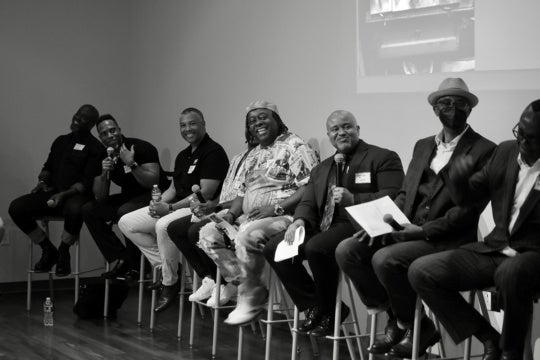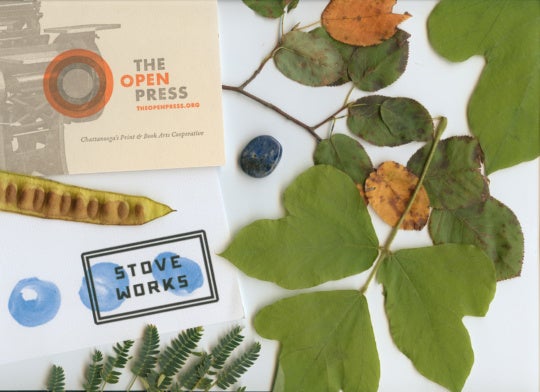
In less than two month’s time, Paris will host the third annual European counterpart of New York’s Outsider Art Fair, which returns to Chelsea in early 2016. In Georgia, however, maintaining a distinction between insider and outsider art is not only arguably critically useless but also misleading. The work of Howard Finster, the visionary Baptist preacher who founded a garden museum in Summerville in 1970, was included in the 1984 Venice Biennial directed by Maurizio Calvesi. In an interview from the July/August 2015 issue of Art Papers with Katherine Jentleson, the High Museum’s new curator of folk and self-taught art, scholar Raphael Koenig notes that institutional focus has “[shifted] to self-taught artists from the South.” Later in the conversation, he also points out that Jentleson’s “job title conspicuously avoids the term outsider.”
As the margins of the art world drift toward the center, with Southern self-taught artists particularly benefitting from renewed attention, the Parallel Georgia Project was founded by Loose Change contributor Andrew Forrest Baker and current Walthall Artist Fellow Quinn Wolff-Wilczynski to promote Atlanta artists without significant academic training. (Self-taught artists shouldn’t be confused with recreational ones, or else the issue of access to formal education and opportunities for exhibition is erased entirely.) The project’s inaugural exhibition, “Visible,” brings together the work of local self-taught artists Greg Painter and Legendary Grant Mullins, who were selected from a pool of applicants by representatives from the Parallel Georgia Project, the Instagram-based photography community #WELOVEATL, and WonderRoot Gallery, where the exhibition is on view through September 25.

The first half of “Visible” is primarily composed of works on paper and drawings, and both artists employ modest materials, such as pastels, pencils, and markers, to create these pieces. Painter’s contributions constitute two-thirds of the exhibition. His style and artistic concerns are clearly articulated in the drawing Party, done simply with pencil and pastel on paper. Frenetic pencil marks, large and looping throughout the drawing but reduced to a scribbled tangle in its center, compose the spaces in which Painter develops the swaths of pastel that give Party its volume and emotional energy. As he reveals in the rest of his work in “Visible,” for Painter bodies are indistinct and overlapping, best represented by intersecting planes of color. Only a few human features are recognizable: the red pastel thickly smeared into a mouth, the disproportionately large eye left barely visible. Also especially striking are Painter’s drawings Mind You Own Biz-a-ness, Better Be Sure, and Egyptian, which appear like studies in progress, imparting a feeling of voyeuristic illumination with their barely legible marginalia. It is with these works on paper that Painter makes his strongest efforts in the exhibition, displaying a dynamic creative vision that captures the power of fleeting sensations and impressions. The six paintings that make up the other half of his contributions to “Visible” show the same interest in using bright colors and two-dimensional planes to create charged abstract images, but they abandon the playful provisional quality of his drawings for a stock visual vocabulary of human hearts and toxic-looking skulls.
There is only one pencil-on-canvas drawing by Legendary Grant Mullins hung with Painter’s sketches, but that single drawing and Mullins’s five paintings in “Visible” demonstrate more substantial consistency than Painter’s work provides. Mullins’s drawing, Creating a Dream, is a portrait of a young boy set against a background of tessellated geometric shapes. Other smaller figures appear behind the boy—four women, one with a baby—but the geometric background contains subtler faces: one grinning maniacally, another resembling a traditional African mask, elsewhere an elusive pair of eyes. Mullins is fond of using these geometric backdrops to hide surprising figures and faces; he does so again in his paintings Three Priests Surrounded by Angels and Tammy the Snake Warrior, transforming the tessellations into elaborate stonework or stained glass windows. The influence of illustrated Bibles and comic books on Mullins’s paintings is obvious, especially in ones like the disappointingly flat Good Shepherd and Michael vs. Michael, but Three Priests Surrounded by Angels goes beyond these influences to become the most exquisite and richly human piece in the exhibition. Mullins’s cherubs are plump and sensuous, infusing the superficially sacred subject with a saucy dose of the profane, and the richness of the painting’s colors set it apart in a show full of eye-catching tones.

“Visible” closes on Friday, but the Parallel Georgia Project is preparing for two upcoming exhibitions in Atlanta featuring self-taught artists. In early November, the project will organize an exhibition at Cabbagetown Studio, followed by a collaboration with the Low Museum in December featuring artists who identify as female or outside the gender binary. The emergence of the Parallel Georgia Project represents the confluence of a longstanding tradition in this state and a broader art world trend, but self-taught artists have never been outsiders in Georgia—they’re just finally getting the resources and exposure they deserve.
“Visible” is on view at WonderRoot Gallery through September 25.
Logan Lockner is a writer living in Atlanta. He studied English literature and linguistics at Emory University and University College London, concentrating on the work of Virginia Woolf. His writing has appeared online in Oxford American, Paste, the Los Angeles Review of Books, and elsewhere. He is a participant in the second cycle of the Emerging Art Writers Mentorship Program.




